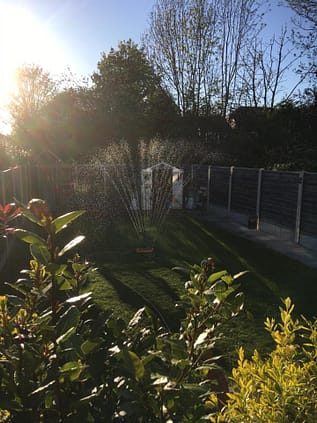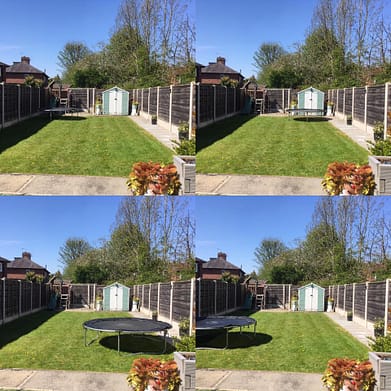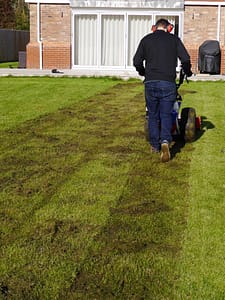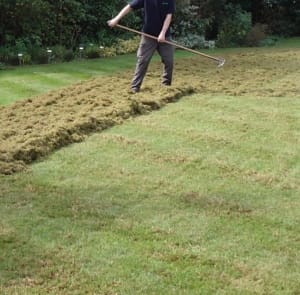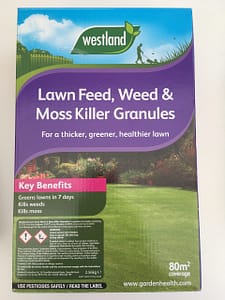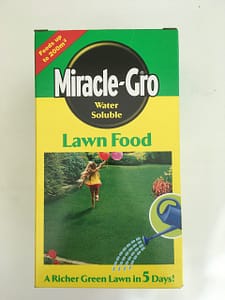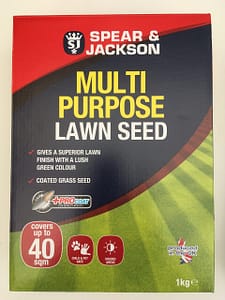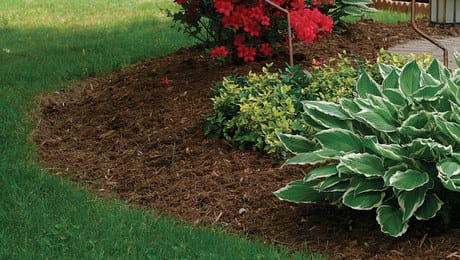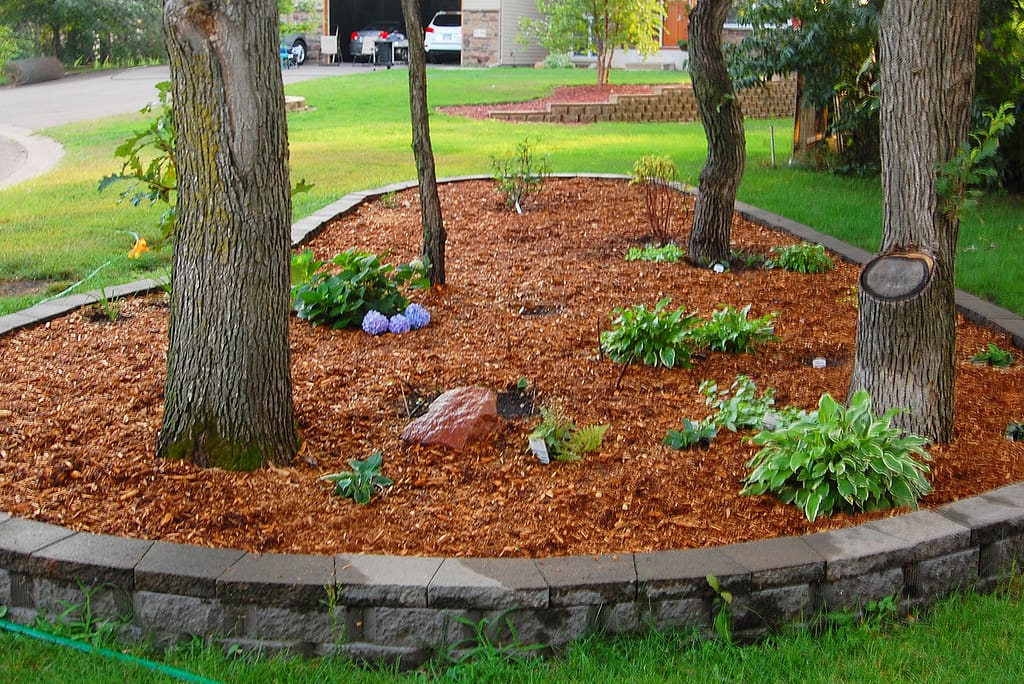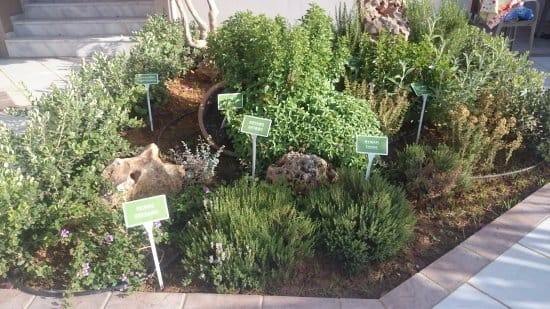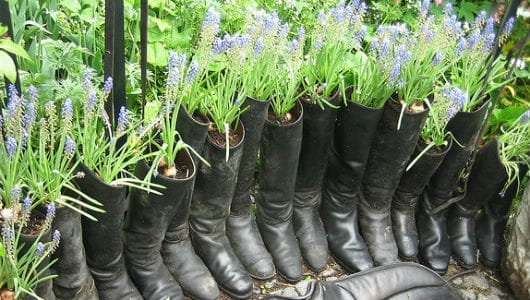Eco-Gardener regularly carries out a range of lawn repair works for our customers across Didsbury and surrounding areas. If you are fed up of bare patches, dead or dying grass, moss and thatch and stubborn weeds, we can help.
We can carry out a comprehensive plan over a number of weeks to return your lawn back to lush green grass, that even the grounds people at Wimbledon would be proud of!
Here are the main 4 parts to the lawn repair process:
Step 1: Scarifying
This is the first step in the process. We use a range of techniques to remove dead and dying grass buried deep in the lawn. Over time this acts as a barrier preventing new grass blades from growing through and replacing the old dead grass. This thatch can lay deep in the lawn and is often unnoticeable.
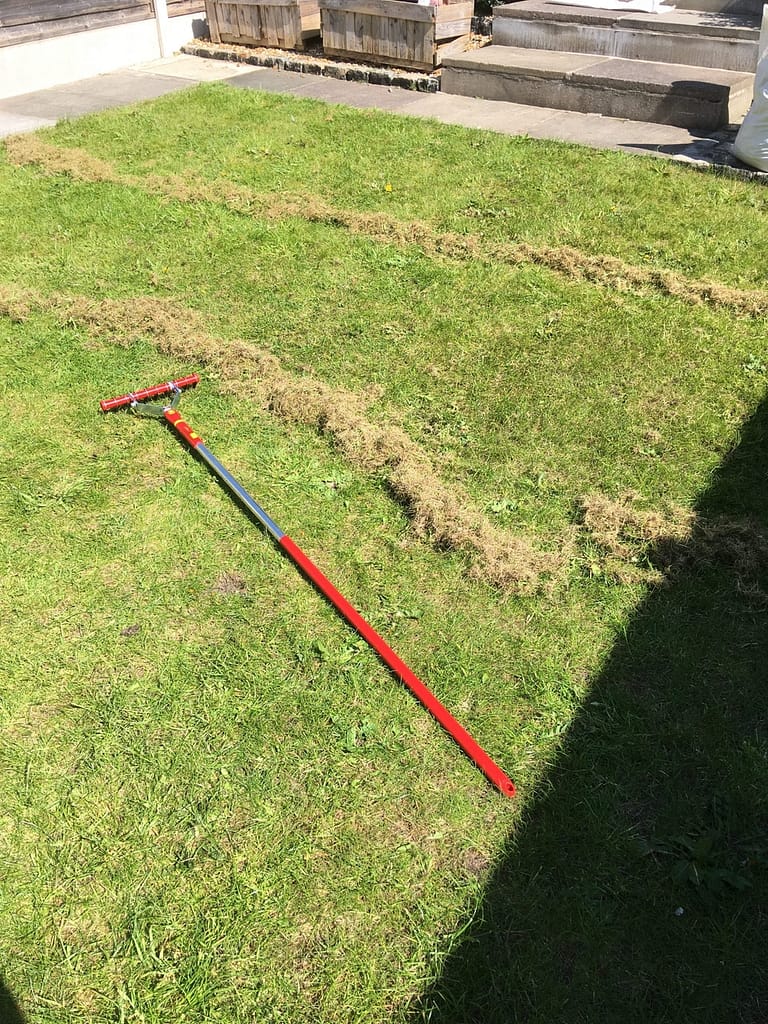
You will be amazed by just how much dead thatch can come out of your lawn. In this picture just a few square feet of lawn as produced a bin bag full of dead grass.
This acts as a lawyer underneath the grass blades that can prevent new grass growth. Once removed the grass will look darker as the top soil beneath is now visible.
Step 2: Weeding
The one job most gardeners dislike, weeding! There are many lawn feed/weed and moss killer products available from your DIY store. You may have even tried them before. Whilst they can work, sadly they are never 100% effective. Dandelion is a common weed found in lawns. Their roots can grow over 9inches deep into the lawn.

The only truly effective way is to remove them all by hand. If you have never done this before, try taking out just one as a test. They are hard work to remove, and removing the root is the only effective way to completely remove them.
Step 3: Soil Aeration
Now we have removed the dead grass and weeds, we can see more of the top soil. Areating the lawn allows air, water and nutrients to penetrate the lawn down to the roots. Sending these vital nutrients direct to the root gives the lawn the best chance of growing and ensuring goodness goes to the vital parts.
Aerating the lawn also helps with over seeding. Prior to sowing new grass seed, aerating the lawn can help protect newly sown grass seed.
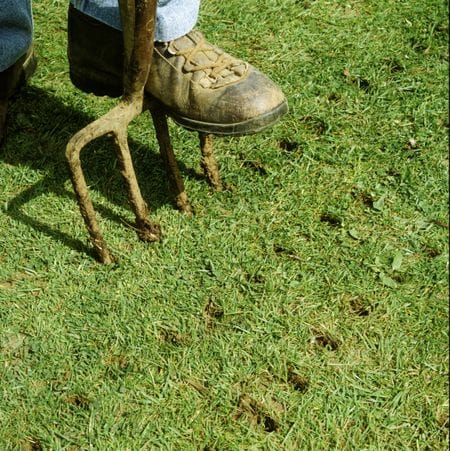
Lawn areating can be done a number of ways. From a simple fork in the ground to a variety of other tools including power tools for larger lawns.
It is important to ensure equal coverage all across the lawn.
Step 4: Over-seeding & Top Soil
The final step is to now spread new grass seed whilst adding a fresh layer of top soil to the lawn. This will great a thicker lawn as new grass seed germinates and starts growing in between the existing grass. Its worth noting that just throwing down extra grass seed on top of a lawn, without doing the above three steps will have minimal impact, and just provide seed for the birds to eat!
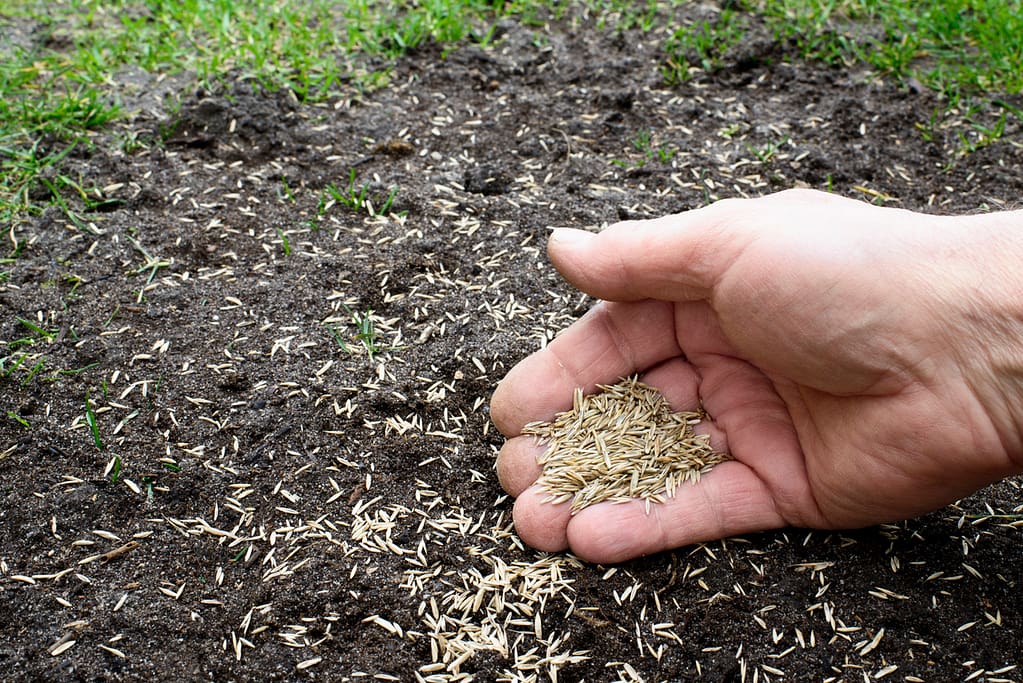
It is important to use a grass sowing spreader or someone with expertise.
Too much seed means seeds are competing for resources.
Too little and it wont be effective in removing the patches in your lawn.
It is also important to ensure the correct soil top dressing is done. This will give the grass seed the best possible chances of success and provide the required conditions for the grass seed to start growing.
About Us:
Eco-Gardener is an environmentally friendly gardening service. We provide all the normal garden services you would expect, but work sympathetically with your garden. We aim to recycle and reuse all garden material. We also sell a small range of garden products which are 100% recycled from local gardens including Eco-Mulch and Eco-Wood chippings. We off-set our vehicle carbon emissions and donate regularly to the Woodland Trust.
Contact us for a free no obligation quote.
We can do a range of jobs from taking down trees and hedges, pruning and cutting back, or regular garden maintenance. We can also do large one-off jobs such as a full garden clearance.
Experienced and professional yet small and local, your garden is in safe hands.


